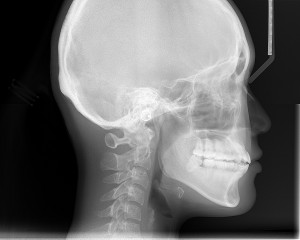Cephalometric Analysis for Orthognathic Surgery
- CephX | AI Driven Dental Services
- Blog
- Cephalometric Analysis for Orthognathic Surgery
The key for successful orthognathic surgery is the precise and careful diagnosis of facial, skeletal, and dental problems. The Cephalometric Analysis for Orthognathic Surgery (COGS) analysis is a specialized system that works with the hard tissue in the face. Orthognathic surgery works specifically to improve the imbalance between one’s upper and lower jaws. This will effectively enable the patient to bite together correctly; it also has been known to benefit and enhance one’s facial appearance.
The COGS analysis of hard tissue shows the orthodontists the horizontal and vertical positions of the facial bones by the use of a steady harmonized system. In the GOGS analysis the size of the bones are represented by direct linear measurements whereas the shapes are measured by angular measurements. When planning for the treatment for orthognathic surgery and for the diagnosis of orthognathic surgery the COGS analysis has been imperative.
The COGS analysis is so imperative to the evaluation of orthognathic surgical patients because it has certain characteristics which allow it to become particularly adaptable to the situation. The landmarks and measurements selected in the analysis can be altered by numerous surgical procedures. The rectilinear measurements can be transferred readily to a case study for mock surgery to learn further. And finally the comprehensive appraisal encompasses all of the facial bones and a cranial base for reference.
Patients who require orthognathic surgery are typically concerned not only with the fixation of the function of the jaw but also with the esthetics. The cephalometric analysis has been reduced to only the most relevant and significant measurements to provide patients with soft tissue evaluation to enable the clinician to achieve good facial esthetics for his or her patients.
To make it clinically practical, the analysis has been reduced to its most relevant and significant measurements. Used along with other diagnostic aids, this soft tissue evaluation will enable the clinician to achieve good facial esthetics for his or her patients. Because the measurements in cephalometric analyses are primarily linear, they may be eagerly applied to prediction overlays and serve as a basis for the assessment of other post treatment stability options.
Range of Normality
Like many other standards in orthodontistry, COGS analysis can differ quite vastly amongst different ethnicities and groups of people around the world. Perhaps the most challenging task in the entire diagnostic system is establishing what the range of normality is. Once you have a standard base of ‘what is normal’ it’s easier to detect changes in structure and evaluate abnormalities.
Cephalometric norms can be valuable to the clinician to determine a patients abnormalities. These norms are based upon a variety of ideal cephalometric measurements based upon the patient’s age, sex, size, and race. It has been found that perhaps the biggest differentiating factor in normality is the difference between ‘normal’ for different racial groups.
Hence much research has been done to trace individual ethnic groups own set of normal characteristics. The skeletal, dental, as well as soft tissue differs ing groups from varying populations around the world. The cephalometric parameters used for the COGS analysis can’t be applied from group to group. This is why it’s ever so important to determine the norms of cephalometrics for orthognathic surgery for different populations throughout the world.







